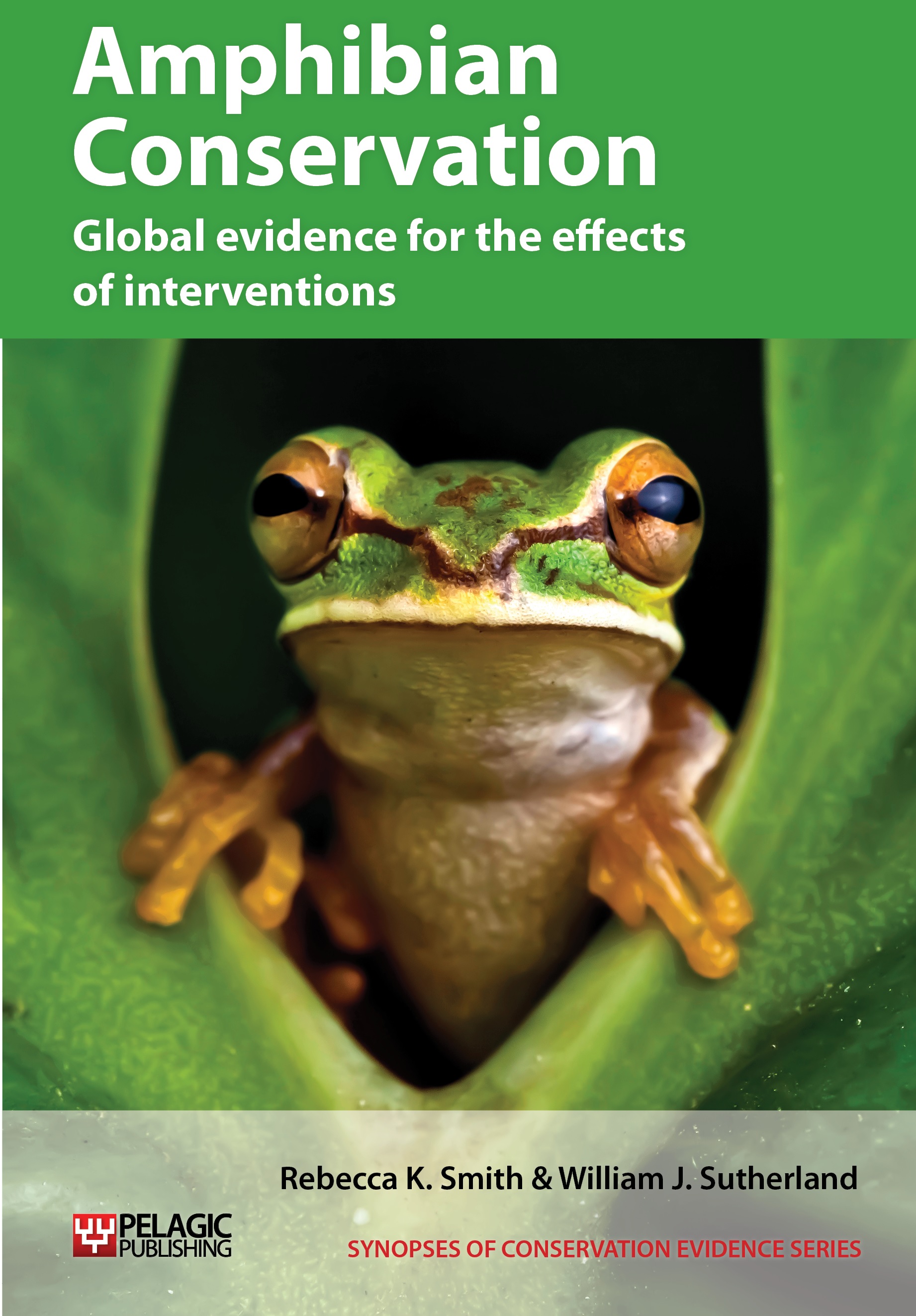Pay farmers to cover the costs of conservation measures
-
Overall effectiveness category Likely to be beneficial
-
Number of studies: 5
View assessment score
Hide assessment score
How is the evidence assessed?
-
Effectiveness
70% -
Certainty
53% -
Harms
10%
Study locations
Supporting evidence from individual studies
A study in 1986–1993 of payments to landowners to create ponds on the island of Samsø, Denmark (Amtkjær 1995) found that landowners created 29 ponds following payments, of which 17 were colonized and 12 used for breeding by green toads Bufo viridis. Breeding was successful in 10 of the 12 ponds. Toads colonized the ponds over three years. Private landowners were offered payment by the county to build ponds. Twenty-nine ponds were created in 1989–1992. Fish, crayfish and ducks could not be introduced and a 10 m pesticide-free zone was required around each pond.
Study and other actions testedA replicated, before-and-after study in 1986–2004 of coastal meadows in Funen County, Denmark (Briggs 2004) found that green toad Bufo viridis and natterjack toad Bufo calamita populations increased significantly following habitat management supported by agri-environment schemes. On 10 islands with management, green toads increased from 1,132 to over 10,000 adults. In contrast, numbers remained stable on four islands without management. Pond occupancy increased from 27 to 61 ponds in 1997 and ponds with successful breeding from 11 to 22. Natterjacks increased from 3,106 to 4,892 adults in 1997. Ponds with successful breeding remained similar (28 increased to 34). In 2000–2004, numbers dropped and small populations were lost due to insufficient grazing. In 1987–1993, cattle grazing was reintroduced to 111 ha of coastal meadows on six islands and continued on a further 10. From 1990, farmers could get financial support from agri-environmental schemes. In addition, 31 ponds were created and 31 restored on 16 islands. Green toad eggs were translocated to one island. Four populations were monitored annually and others less frequently during two or three call, visual and dip-net surveys.
Study and other actions testedA before-and-after study in 2001–2006 of subsidising farmers to maintain bamboo bushes in Taiwan (Chang et al. 2008) found that following five years of subsidies, the area of green tree frog Rhacophorus arvalis habitat had decreased by approximately 50%. This was considered by the authors to be the result of aging farmers changing from growing bamboo to crops that were less physically demanding and the low price of bamboo. Before agreement finalization in 2006, farmers asked for double the subsidies otherwise they would change their crops. Some did change crops. Taipei Zoo, Taipei Zoological Foundation, the Wild Bird Society of Yunlin and the Farmers’ Association of Gukeng Township raised funds for the conservation project. A five-year agreement was drawn up with 21 farmers to maintain a 5 ha area of bamboo bush that they owned. Farmers were given approximately US $150 each year provided that original farming patterns were maintained, pesticide use was avoided, fallen leaves were left on the ground and bamboo bushes were watered.
Study and other actions testedA before-and-after study in 1999–2006 of a water lily paddy field in Taipei County, Taiwan (Lin et al. 2008) found that providing financial incentives resulted in a farmer adopting organic-farming practices. Halting herbicide and pesticide use along with habitat management more than doubled a population of Taipei frogs Rana taipehensis (from 28 to 85). In 2002, a proportion of a farmer’s crop was sold for him and additional expenses resulting from no longer using herbicides and pesticides were paid for. Habitat management, with participation from the local community, included cutting weeds in the field. Community-education programmes about wetland conservation were also carried out in the area.
Study and other actions testedA replicated, site comparison study of 42 ditches within pasture in the Western Peat District of the Netherlands (Maes, Musters & De Snoo 2008) found that amphibian diversity and abundance were significantly higher in ditches managed under agri-environment schemes compared to conventional management. Adult green frog Rana esculenta numbers in conventional ditches declined with distance from reserves; this was not the case in agri-environment scheme ditches. Farmers managing ditches under agri-environment schemes are encouraged to reduce grazing/mowing intensity, reduce fertilizer inputs, and not to deposit mowing cuttings or sediments from ditch cleaning on the ditch banks. Relative amphibian abundance was measured in ditches in April–May and/or May–July 2008. Ditches were perpendicular to eight nature reserve borders and monitoring was just inside reserves and at four distances (0–700 m) from reserve borders. Three methods were used during each sampling period: five minute counts, 20 dip net samples and two overnight funnel traps.
Study and other actions tested
Where has this evidence come from?
List of journals searched by synopsis
All the journals searched for all synopses
This Action forms part of the Action Synopsis:
Amphibian Conservation
Amphibian Conservation - Published 2014
Amphibian Synopsis





)_2023.JPG)














